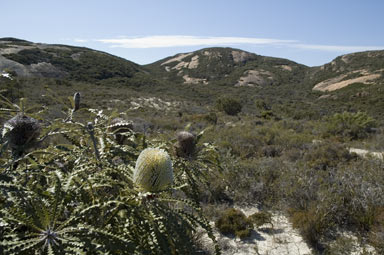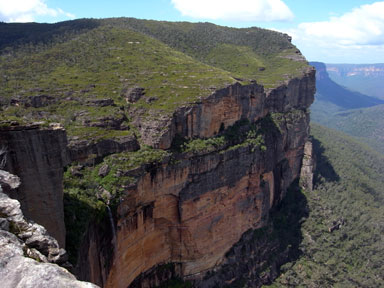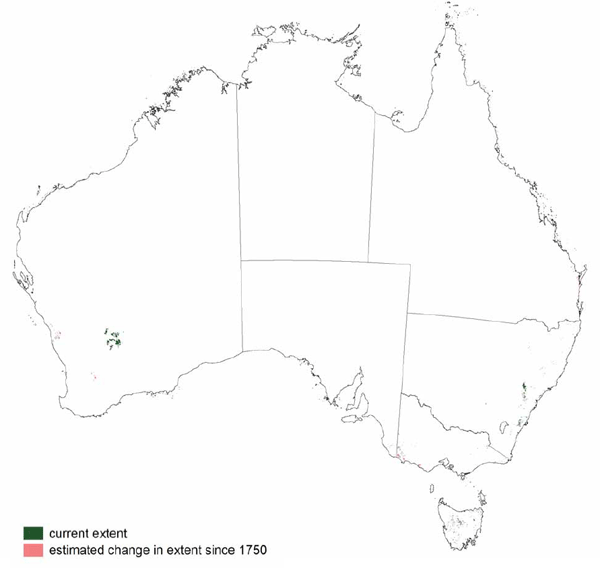 Coastal Heath with Banksia speciosa in foreground, Lucky Bay, WA |
 Heath on shallow soils over sandstone, Walls Lookout, Gross Valley, Blue Mountains, NSW |
Foliage cover of tallest stratum greater than 70% |
Heathlands
- Dense-canopied, mixed shrublands dominated
by plant genera typical of infertile and/or
waterlogged sites, generally on coastal,
montane, sandy or laterite soils.
- Includes stunted vegetation less than 1m tall,
typified by the families Ericaceae (Epacridaceae) and
Myrtaceae and also other dense, low shrublands
in subcoastal or inland environments.
- Typical areas include the coastal sand masses
of north-east New South Wales and south-east
Queensland such as Fraser Island and Cooloola,
headlands of the Victorian and New South
Wales coastlines, Kwongan and southern
coastal areas of Western Australia.
- Dominant genera include Allocasuarina, Baekea, Banksia, Calytrix, Hakea, Epacris, Grevillea, Leptospermum, Melaleuca, Leucopogon, Prostanthera, Richea and Xanthorrhoea.
Many heath communities have been extensively cleared for sand mining, agriculture and urban development.
![]() Photos from the Australian Plant Image Index
Photos from the Australian Plant Image Index

Sources: Australia's Native Vegetation - from rainforest to spinifex, map and information poster produced by the National Land & Water Audit, Natural Heritage Trust, Australian Government, 2001
Map: Australia's Native Vegetation - A summary of Australia's Major Vegetation Groups, 2007, Australian Government website
https://www.environment.gov.au/system/files/resources/a9897cf2-9d38-4201-bea2-13dadf3af9a8/files/major-veg-summary.pdf
Structure diagram: Atlas of Australian Resources - Vol. 6, Vegetation,
AUSLIG, Canberra, 1990
![An Australian Government Initiative [logo]](/images/austgovt_brown_90px.gif)



